
Disc Brakes vs Rim Brakes for Carbon Road Bikes
Choosing the right brakes for your carbon road bike can make a big difference in how safe and comfortable your rides feel. You might have heard about disc brakes and rim brakes, and wondered which one suits your needs best. Disc brakes have grown in popularity for their stopping power and consistency, especially in wet or hilly conditions. Rim brakes, on the other hand, are lighter, simpler, and easier to maintain, which can appeal to riders who value speed and simplicity. In this article, you’ll explore the history, mechanics, performance differences, and practical applications of both brake types. By the end, you’ll have a clear understanding of how disc and rim brakes compare, helping you make an informed choice for your cycling style and conditions.
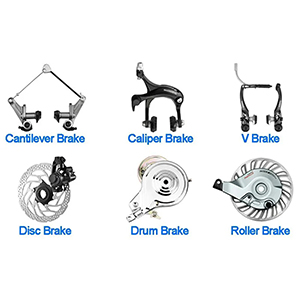
Historical Development and Industry Trends
Cycling braking systems have changed a lot over the years. To understand why disc brakes are becoming more popular today, it helps to look back at how rim brakes evolved, how disc brakes entered road and mountain biking, and what current regulations mean for riders like you.
Evolution of Rim Brakes in Cycling
Rim brakes have been the standard choice for road bikes for decades. You’ll notice that most classic racing bikes rely on caliper-style brakes, which press pads directly against the wheel rim to slow you down. Over time, rim brakes evolved into more specialized designs, including cantilever and V-brakes. These designs improved stopping power and modulation, giving riders better control in different conditions. Rim brakes remain lightweight, simple to maintain, and easy to adjust, making them a popular option for many cyclists who prioritize speed and minimal weight.
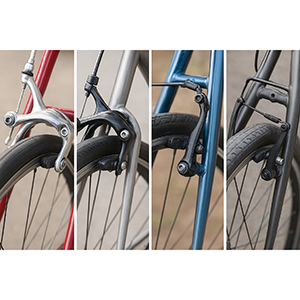
Rise of Disc Brakes in Road and Mountain Bikes
Disc brakes started in mountain biking, where consistent stopping power in mud and steep descents is crucial. You might have seen them on newer road bikes, too. Hydraulic and mechanical disc systems offer stronger, more predictable braking, especially in wet weather or long downhill rides. The rise of disc brakes changed how manufacturers design bike frames, wheels, and forks, emphasizing rotor clearance, hub compatibility, and overall safety.
Current Industry Adoption and UCI Regulations
Today, disc brakes are becoming common in both road and mountain biking. Professional racing teams increasingly adopt them, and many bike brands offer disc brake options as standard. The UCI (Union Cycliste Internationale) now allows disc brakes in most professional road races, setting clear standards for rotor size and safety.
What Are Carbon Road Bike Disc Brakes?
Disc brakes have become increasingly common on modern road bikes, offering consistent stopping power and better control in various conditions. Unlike rim brakes, disc brakes use a rotor attached to the wheel hub, which the brake caliper clamps to slow you down. Understanding how they work can help you decide if they are the right choice for your riding style.
Mechanical vs Hydraulic Disc Brakes
When looking at disc brakes, you’ll encounter two main types:
Mechanical Disc Brakes: These operate with cables, similar to traditional rim brakes. They are simple to adjust and maintain, but may not provide as smooth or powerful braking as hydraulic systems.
Hydraulic Disc Brakes: These use fluid-filled lines to transfer pressure from your brake lever to the caliper. They offer stronger, more consistent stopping power and better modulation, especially on long descents or in wet conditions.
How Disc Brakes Work
Disc brakes work by pressing brake pads against a spinning rotor attached to your wheel hub. This friction slows your wheel more efficiently than rim braking in most conditions. Hydraulic systems enhance this by transferring force evenly, giving you better control with less effort at the lever.
Advantages and Limitations
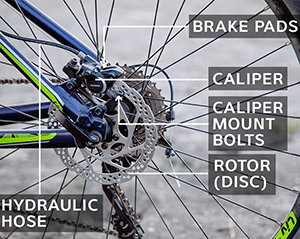
What Are Carbon Road Bike Rim Brakes?
Rim brakes have been a staple of road cycling for decades, and many riders still appreciate their simplicity and efficiency. On carbon road bikes, rim brakes are designed to work with lightweight wheels while providing reliable stopping power in most conditions.
Types of Rim Brakes
Caliper Brakes: Common on road bikes, these brakes clamp directly onto the wheel rim using a single pivot or dual pivot mechanism. They are lightweight and aerodynamic.
Cantilever Brakes: Often found on cyclocross or touring bikes, they provide more clearance for wider tires and mud but require slightly more effort to operate.
V-Brakes: Popular in mountain biking, they offer strong stopping power but are less common on modern road bikes.
How Rim Brakes Work
Rim brakes slow your bike by pressing brake pads against the wheel rim. When you squeeze the brake lever, tension in the cable pulls the caliper arms, bringing the pads into contact with the rim and creating friction that reduces speed.
Advantages and Limitations
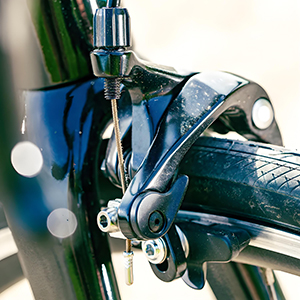
Disc Brakes vs Rim Brakes: Performance Comparison
|
Performance Aspect |
Disc Brakes |
Rim Brakes |
What It Means for You |
|
Weight and Aerodynamics |
Slightly heavier due to rotors and calipers; may affect climbing and overall bike weight |
Lighter and more aerodynamic; benefits speed and efficiency on flat terrain |
If you value low weight and aerodynamics, rim brakes can feel snappier, especially on long road rides |
|
Stopping Power: Dry vs Wet Conditions |
Strong and consistent in both dry and wet weather; more reliable on descents |
Strong in dry conditions, but performance drops in rain or on wet roads |
You’ll notice safer braking in wet conditions with disc brakes, reducing the risk of skidding |
|
Braking Feel and Modulation |
Smooth and predictable; hydraulic systems offer fine control |
Direct and immediate; easier to feel the pads engaging the rim |
Disc brakes give you better control for precise braking, while rim brakes feel more connected to the wheel |
|
Heat Dissipation and Brake Fade |
Rotors handle heat well; less fade on long descents |
Rims can overheat on long climbs or long downhill braking |
For long descents, disc brakes maintain consistent stopping power; rim brakes may fade after heavy use |
Material Considerations and Wheel Compatibility
When choosing between disc and rim brakes, the materials of your bike and wheels play a big role. Different brakes interact with frames, forks, and wheel types in unique ways, which can affect performance and safety.
How Disc Brakes Change Road Bikes
Disc brakes require your frame and fork to accommodate calipers and rotors. This often means slightly wider fork spacing, reinforced mounts, and hubs designed for rotor attachment. You might notice your bike handles a little differently because disc brakes add weight near the wheels, but the trade-off is improved braking power and control in varied conditions.
Carbon vs Alloy Rim Compatibility with Rim Brakes
Rim brakes need compatible rims for effective braking.
Carbon Rims: You must use brake pads designed specifically for carbon to avoid overheating and excessive wear.
Alloy Rims: Standard brake pads work well, and wear is easier to manage.
Rotor Sizes and Hub Standards for Disc Brakes
Disc brake rotors come in different sizes, usually ranging from 140mm to 160mm for road bikes, with some riders choosing larger rotors for extra stopping power. Hub standards vary, too, so you’ll need to ensure your wheels match the rotor type and mounting system (center-lock or 6-bolt).
Retrofitting Challenges and Upgrade Paths
Upgrading an older bike to disc brakes isn’t always straightforward. Frame and fork compatibility, wheel hub standards, and brake mounts can limit your options. If you plan to retrofit, you might need new wheels, calipers, and sometimes even a compatible fork.
Maintenance, Durability, and Cost
Keeping your brakes in good condition is key to safe and efficient riding. Both disc and rim brakes require attention, but the steps differ slightly depending on the system.
How to Clean Bike Disc Rotors for Peak Braking
Clean disc rotors regularly with isopropyl alcohol or a dedicated brake cleaner. Avoid touching the rotor surface with your fingers, as oils can reduce braking efficiency. Wipe with a lint-free cloth for the best results.
Cleaning Rim Brakes and Brake Pads
Rim brakes need occasional cleaning to remove dust and grime from the wheel rim and brake pads. A damp cloth or mild soap solution works well. Check that pads are aligned correctly to avoid uneven wear.

Best Applications for Each Brake System
Choosing the right brake system depends on how and where you ride. Each type has strengths that suit different cycling styles and conditions.
Road Racing and Endurance Riding
If you focus on speed and long-distance performance, rim brakes are often preferred. Their lightweight design helps you climb efficiently, and the aerodynamic profile keeps you fast on flats. Many professional riders still rely on rim brakes for dry-road racing.
Gravel, Cyclocross, and Mountain Biking
Disc brakes shine in off-road and mixed-terrain riding. You’ll benefit from strong, consistent stopping power on muddy paths, loose gravel, or steep descents. Hydraulic discs, in particular, give you better modulation, making tricky terrain easier to navigate and reducing the risk of skidding.
Commuting, Touring, and Casual Riders
For everyday riding, both systems work well. Disc brakes offer reliability in all weather, which is useful for commuting or touring in varied conditions. Rim brakes are simple, lightweight, and easy to maintain, making them convenient for casual rides and long-term upkeep.
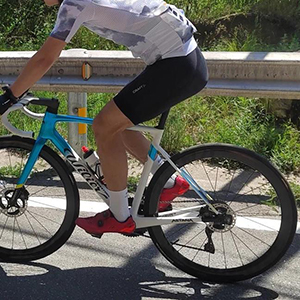
Future of Braking Technology in Cycling
Braking technology continues to evolve, giving riders more options and improved performance. You’ll likely see disc brakes becoming even more common on road bikes, with lighter rotors, improved hydraulic systems, and better integration with electronic shifting.
At the same time, rim brakes aren’t disappearing. Innovations in carbon-compatible brake pads and aerodynamic designs are keeping them relevant, especially for racing and lightweight setups.
We may also see new materials and smart technologies, such as sensors that monitor pad wear or adjust braking force automatically. These developments aim to make braking safer, more efficient, and easier to maintain.
Conclusion
Choosing between disc brakes and rim brakes comes down to your riding style, terrain, and priorities. Both systems have unique strengths that can improve your cycling experience.
Disc brakes offer strong, consistent stopping power, excellent performance in wet conditions, and better modulation on tricky descents. Rim brakes remain lightweight, simple to maintain, and highly aerodynamic, which appeals to racers and long-distance riders on dry roads.
Understanding how each system works, the maintenance they require, and their compatibility with your bike helps you make an informed choice.
Whether you ride competitively, explore gravel paths, or enjoy casual rides, selecting the right brake system can enhance safety, control, and confidence.
By considering performance, durability, and practical applications, you can match your bike setup to your needs. In the end, the best brakes are the ones that let you focus on enjoying every ride.
Previous :
2025 Carbon Bike Size Chart: Complete GuideNext :
Carbon Cranks vs AluminumCategories
New Blog
Copyright © 2025 Top-Fire Carbon Technology Co., Ltd. All Rights Reserved. Power by

IPv6 network supported